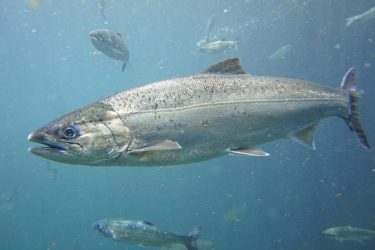
Animals that live in groups tend to be more protected from predators. That idea might be common sense, but it’s difficult to test for some species, especially for wild populations of fish that live in the ocean.
A new University of Washington study that leverages historical data has found unique support for the “safety in numbers” hypothesis by showing that Pacific salmon in larger groups have lower risk of being eaten by predators. But for some salmon species, schooling comes at the cost of competition for food, and those fish may trade safety for a meal. The study was published June 29 in the journal Science Advances.
“With salmon, most people think of them spawning in freshwater streams, but there’s also this huge amount of time they spend in the ocean feeding and growing,” said lead author Anne Polyakov, a doctoral student in the UW’s interdisciplinary Quantitative Ecology and Resource Management Program and the School of Aquatic and Fishery Sciences. “One of the reasons why this study is so unique is that we essentially can’t observe these fish at all in their natural ocean environment, and yet we’re able to pull out these really strong results on how grouping affects predation risk and foraging success for individual fish using this incredibly valuable dataset.”
Read more at UW News »
